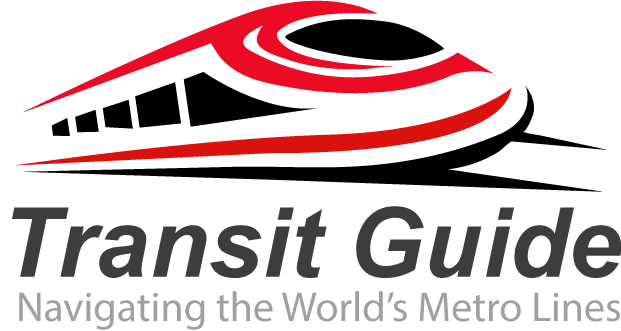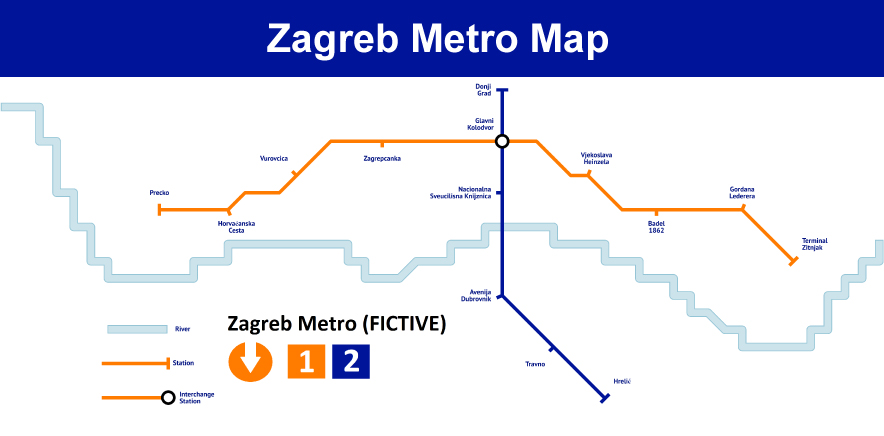Zagreb Metro System: Complete Guide and Future Plans
Zagreb, Croatia’s vibrant capital, has long been planning a comprehensive metro system to modernize its urban transportation network. While the city currently relies on an extensive tram and bus system operated by ZET (Zagreb Electric Tram), the dream of an underground metro continues to evolve through various development phases.
Current Status of Zagreb Metro
As of 2025, Zagreb does not yet have an operational metro system. The Croatian capital instead operates one of Europe’s most comprehensive tram networks, featuring 15 daytime lines that serve as the backbone of public transportation. This existing infrastructure has been continuously modernized, with new NT2400 trams recently delivered by local manufacturer Končar KEV.
Historical Development and Planning
The concept of a Zagreb Metro dates back to the 1970s, with the first official plans appearing in 1979 as part of the city’s General Traffic Plan. Since then, numerous proposals have been developed and refined, reflecting changing urban needs and technological advances.
Key Timeline:
- 1971: Initial metro concept introduced
- 1979: First appearance in official city planning documents
- 2018-2020: Comprehensive studies and updated proposals
- 2025: Continued planning and infrastructure modernization
Proposed Metro Design and Routes
The current Zagreb Metro plans envision a sophisticated underground rail system that would integrate with the existing tram network. The proposed design includes:
- Underground tunnels connecting key areas of the city
- Deep stations up to 18 meters below ground level in the city center
- Integration points with the existing tram and bus networks
- Light Rail Underground (LRU) system in central areas
The metro would utilize either narrow gauge tram tracks or standard gauge railway tracks, depending on the final technical specifications adopted.
Challenges and Considerations
Several factors have influenced the Zagreb Metro development timeline:
Technical Challenges:
- Complex underground conditions requiring specialized engineering
- Integration with existing transportation infrastructure
- Urban density considerations in historic city areas
Funding and Economics:
- Significant capital investment requirements
- EU funding opportunities and national budget allocations
- Cost-benefit analysis for public transportation improvements
Urban Planning Integration:
- Coordination with city master plan development
- Environmental impact assessments
- Community consultation and stakeholder engagement
Current Transportation Alternatives
While awaiting metro development, Zagreb maintains an efficient public transportation system:
- 15 tram lines covering major city routes
- Comprehensive bus network serving all districts
- Historic funicular (currently under renovation until March 2026)
- Modern fleet upgrades with new low-floor accessible vehicles
Future Prospects and Timeline
The Zagreb Metro remains a priority in the city’s long-term transportation strategy. Recent infrastructure investments, including new tram deliveries and network modernization, demonstrate continued commitment to public transportation improvement.
Key factors supporting future development include:
- Growing urban population and traffic congestion
- Environmental sustainability goals
- European Union infrastructure funding programs
- Technological advances in underground construction
Impact on Zagreb’s Development
When realized, the Zagreb Metro system would:
- Reduce traffic congestion in the city center
- Improve air quality through decreased car dependency
- Enhance connectivity between residential and business districts
- Support economic growth through improved accessibility
- Modernize Zagreb’s image as a European capital
Conclusion
The Zagreb Metro represents an ambitious vision for the city’s transportation future. While implementation challenges remain, ongoing planning efforts and infrastructure investments position Zagreb to eventually join other European capitals with comprehensive underground rail systems. Until then, the city’s modernized tram and bus network continues to provide reliable public transportation for residents and visitors alike.
For the latest updates on Zagreb’s public transportation developments, residents and visitors should consult ZET’s official communications and city planning announcements as the metro project progresses through its development phases.

